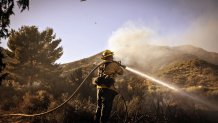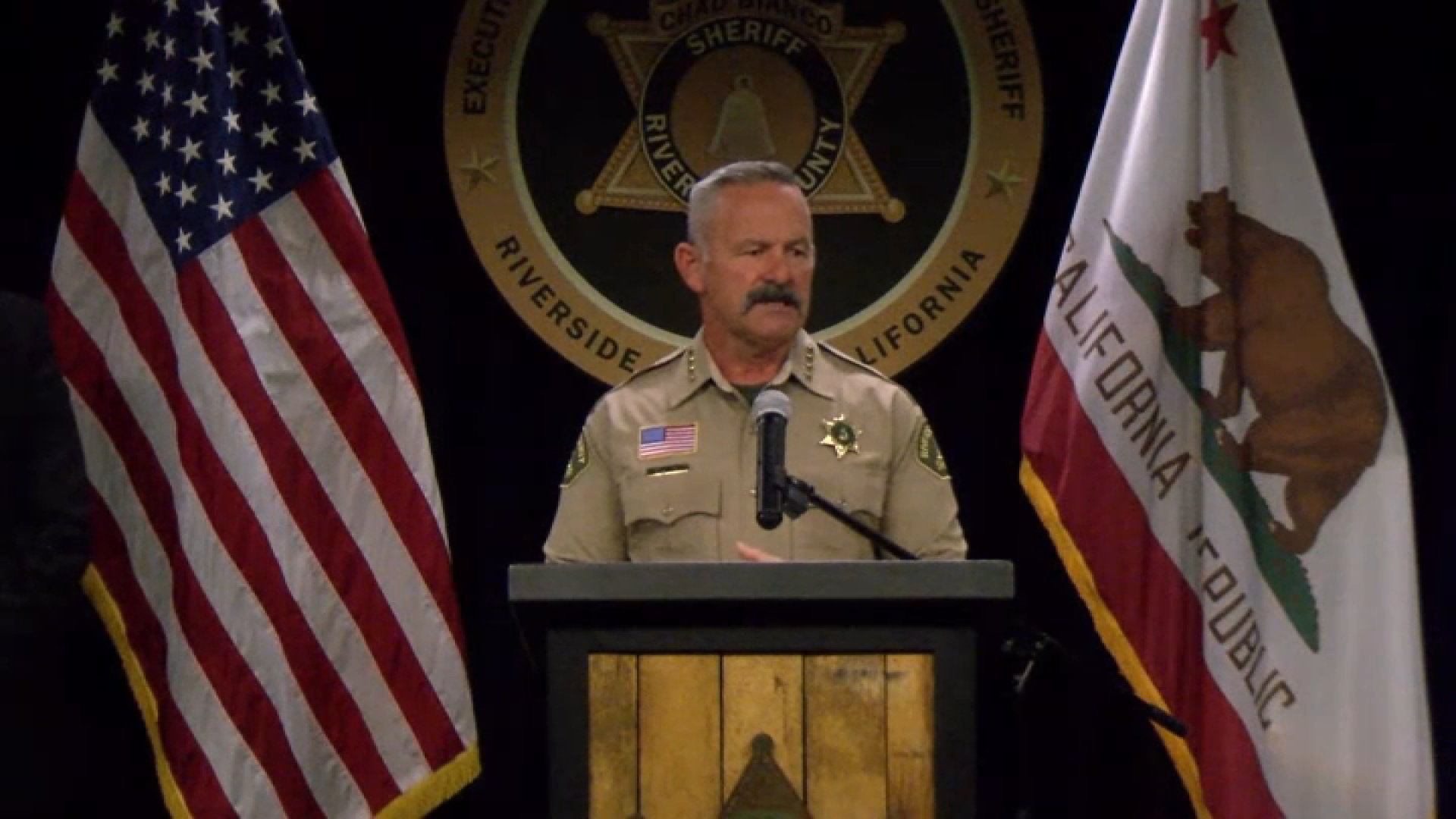San Diego County area firefighters are aiding neighbors to our north with several fires burning tens of thousands of acres across Southern California, agencies said.
San Diego Fire-Rescue has several strike teams deployed outside San Diego County, SDFD spokesperson Mónica Muñoz said, including to the largest burning in Los Angeles and Ventura counties. Cal Fire San Diego has also sent 42 firefighters to help control the Post Fire, which was 20% contained Monday night.
The fire broke out along I-5 in Gorman as weather turned hot and windy in a region where grasses brought by a rainy winter have now dried out and become fuel. Wind aided the fire's growth over the weekend and the fire burned in steep, hard-to-reach areas and threatened critical infrastructure in mountains north of Los Angeles, officials said.
The firefight was not over as hot, dry, windy weather could challenge their efforts Tuesday.
Get top local stories in San Diego delivered to you every morning. >Sign up for NBC San Diego's News Headlines newsletter.
“Fire weather conditions are making it difficult to control the fire,” the Los Angeles County Fire Department said in a Monday night update. “Important structures like power lines, dams, and oil pipelines are at risk.”



Strong winds from the north mean the fire is expected to keep moving south on Tuesday, the department said. High temperatures and low humidity were also forecast. Wind gusts could reach 55 mph.
California
Officials had earlier warned residents of Castaic, home to about 19,000 people, that they should prepare to leave if the fire pushed south.
The fire scorched more than 24 square miles and forced the evacuation Saturday of at least 1,200 campers, off-roaders and hikers from the Hungry Valley recreation area. Two structures burned within the evacuated recreation area.
The majority of the more than 1,000 firefighters assigned to the blaze were focused on its southern edge, near popular Pyramid Lake, which was closed as a precaution on Sunday and Monday.
Smoke has drifted eastward, causing a slight haze in the Las Vegas area. Officials there advised children, older adults, and people with respiratory and heart disease to stay indoors. San Diego County was seeing some haze, but air quality alerts were not above normal.
About 75 miles to the east, Cal Fire San Diego crews were also aiding crews tame the nearly 2-square-mile Hesperia Fire, which was more than 70% contained by Monday night. The fire erupted Saturday and forced road closures and evacuation warnings in San Bernardino County.
In Northern California's Calaveras County, a new fire, the Aero Fire, burned nearly 8 square miles (20 square kilometers) and led to evacuation orders for some residents, officials said.
And about 150 miles to the northwest, a wildfire in a sparsely populated area near Lake Sonoma was 20% surrounded Monday after charring nearly 2 square miles.
After back-to-back wet winters, fire season has gotten off to a slow to near-average start, said Daniel Swain, a climate scientist with the University of California, Los Angeles.
“These are not peak season fires either in scope or behavior, or in terms of where they’re burning,” Swain said in an online briefing. “In many ways, they’re classic, early-season fires since they’re primarily burning in grass and brush.”
Swain said he expects more fire activity to begin in July at lower elevations and August at higher elevations.
“And the bad news is that I think that the back half of this season is going to be much more active, with a lot more concerning level of wildfire activity in a lot of areas than the first half,” he said.



